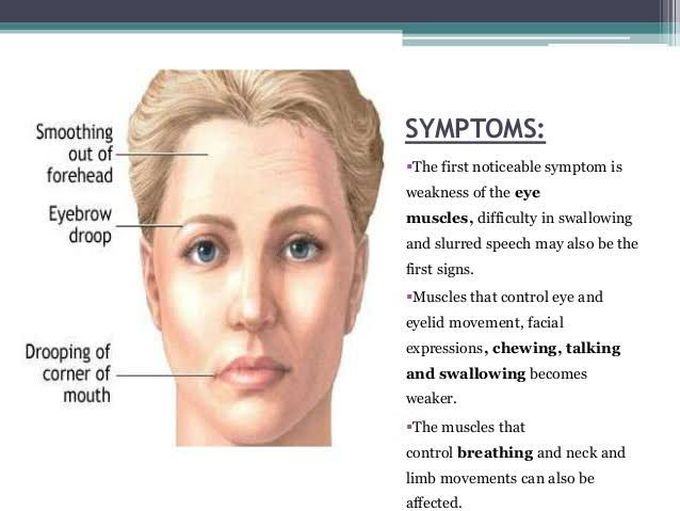


Symptoms of myastheni gravis
Muscle weakness caused by myasthenia gravis worsens as the affected muscle is used. Because symptoms usually improve with rest, muscle weakness can come and go. However, the symptoms tend to progress over time, usually reaching their worst within a few years after the onset of the disease. Although myasthenia gravis can affect any of the muscles that you control voluntarily, certain muscle groups are more commonly affected than others. Eye muscles In more than half of people who develop myasthenia gravis, their first signs and symptoms involve eye problems, such as: Drooping of one or both eyelids (ptosis) Double vision (diplopia), which may be horizontal or vertical, and improves or resolves when one eye is closed Face and throat muscles In about 15% of people with myasthenia gravis, the first symptoms involve face and throat muscles, which can: Impair speaking. Your speech might sound soft or nasal, depending on which muscles have been affected. Cause difficulty swallowing. You might choke easily, making it difficult to eat, drink or take pills. In some cases, liquids you're trying to swallow come out your nose. Affect chewing. The muscles used for chewing might tire halfway through a meal, particularly if you've been eating something hard to chew, such as steak. Change facial expressions. For example, your smile might look like a snarl. Neck and limb muscles Myasthenia gravis can also cause weakness in your neck, arms and legs. Weakness in your legs can affect how you walk. Weak neck muscles make it hard to hold up your head. When to see a doctor Talk to your doctor if you have difficulty: Breathing Seeing Swallowing Chewing Walking Using your arms or hands Holding up your head

